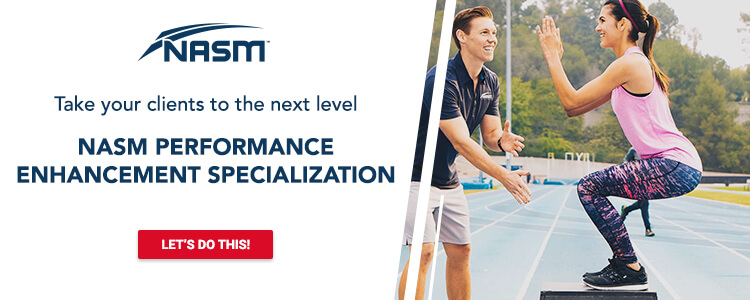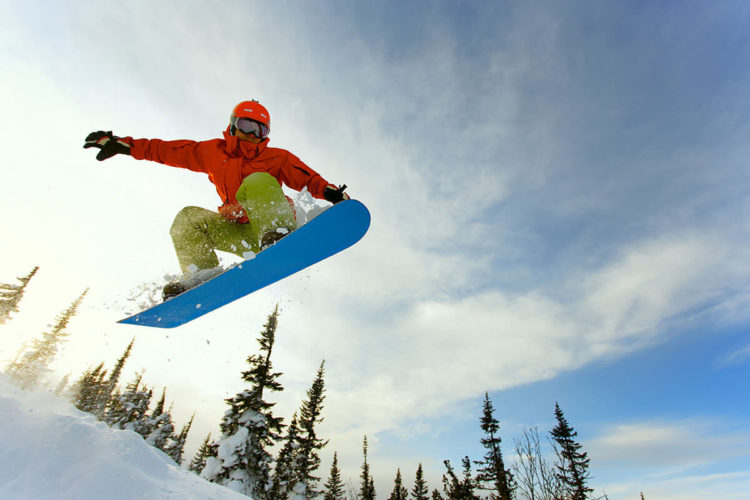By Krista Popowych
The dawning of true winter—and holiday gifts of down-filled jackets and cozy snow gloves—may have clients eagerly anticipating a day on the slopes. For those who have yet to start schussing down the mountain, circling the ice rink or shredding it on their snowboards, some targeted training can help them avoid injury and build strength where they will need it most. But even those who have been playing in the snow for the past month can benefit from sport-specific workouts like those described here.
So can anyone else, for that matter. Mixing up workouts is a great way to keep clients engaged and excited for their next exercise session, whether they love the snow or shun it.
GETTING STARTED: ANALYZE YOUR CLIENT’S SPORT
Because clients enjoy different winter pastimes, it is the personal trainer’s job to be familiar with each person’s sport of choice and train the client accordingly.
Fortunately, whether it’s ice hockey, cross-country skiing or snowboarding, there are certain fundamental movements that are similar. A strong core is essential for any activity requiring balance, and, notably, most winter sports fall into this category. But not all winter activities are identical. With skiing, for example, the best preparation for the grind-it-out, long-haul cardiovascular needs of cross-country treks may be different from the optimal training for downhill skiing’s short-burst intervals. Therefore, analysis of the cardiovascular, strength and flexibility requirements of specific snow sports, along with a deeper consideration of specific movement patterning, is advantageous.
You may also want to repeat certain assessments, such as the single-leg squat assessment and speed, agility and quickness assessments, especially if movements required for the sport seem to be beyond the client’s current phase on the NASM Optimum Performance Training™ model.
CARDIO CONDITIONING FOR ENDURANCE AND INTENSITY
Each winter sport has specific cardio conditioning requirements, so when you are creating a training plan, analyze the cardiovascular needs of the client’s chosen activity. Skiing and snowboarding tend to be more anaerobic, but a solid cardio base is still necessary.
Downhill skiing for the recreational enthusiast requires more moderate-intensity interval training. Most skiers or boarders schuss down the mountain for a couple of minutes and then stop and wait for their snow buddies to catch up before they go (and stop) again—the perfect interval. However, an elite skier may power through 30–60 seconds of moguls and would benefit from high-intensity interval training. So would an ice hockey player.
On the other end of the cardio continuum, cross-country skiers are in it for the long haul and will need to build up their aerobic conditioning. This is best attained with moderate-intensity continuous training, such as steady-state long runs, bike rides or laps in the pool.
Bottom line: Interval-train according to the needs of the sport and the client’s ability.
CORE CHALLENGES FOR PROPER POSTURE
Core training should be at the top of the resistance-training priority list for every snow enthusiast. Strong abdominals and lower-back muscles support the spine and are important for rotational movements used in snowboarding, mogul skiing and ice dancing. These muscles are also necessary when skiing through deep powder or taking on steep mountain grades. The forward flexion associated with skiing will challenge the back muscles to work harder than usual to protect the spine.
To check whether the erector spinae muscles are activated on a forward bend, have your clients place their hands at waist level and above, thumbs forward, fingertips spread, touching the erector muscles. Ask the clients to perform a sloppy forward bend. Next have them hinge correctly, activating their core and back. They will feel the muscles contract when the flex is done properly.
 Introduce a variety of core exercises using either body weight or various small training tools. Russian twists on the stability ball, side planks with rotation, V-sit presses with a sandbag or reverse wood chops with a medicine ball are just a small sample of exercises from the core toolbox.
Introduce a variety of core exercises using either body weight or various small training tools. Russian twists on the stability ball, side planks with rotation, V-sit presses with a sandbag or reverse wood chops with a medicine ball are just a small sample of exercises from the core toolbox.
LOWER-BODY MOVES TO STRENGTHEN AND STABILIZE
Skiing, skating and snowboarding all require strong lower bodies. As many downhill skiers can attest, the first day on the slopes often results in last-run-of-the-day wobble legs. Weak legs equal a greater risk of injury—most accidents happen in the first 1–5 days back on the slopes.
To prepare your clients, developing strength and endurance will be crucial, particularly for those facing a 6-hour ski mountain marathon. Assuming their cardio is good, focus on strengthening the quadriceps, hamstrings and glutes. Strong quads will protect the knees and better prepare the body to hold the forward position used in skiing. Additionally, in both snowboarding and skiing, the body is held in a flexed position with a forward lean from the hips. Therefore, it is also important to train the hamstrings and glutes. Strong hamstrings and glutes will help to stabilize the body and counter any muscular imbalances arising from dominant quadriceps muscles.
For strong quads, it’s squats, squats and more squats. Also include glute bridges and other lower-body posterior-chain exercises as part of the training repertoire. A favorite of winter sport enthusiast Mike Bracko, EdD, a sports physiologist and fitness educator in Calgary, Alberta, is the heel bridge to hamstring curl on a stability ball. This exercise works the entire posterior chain, especially the large hip extensors, gluteus maximus, adductor magnus and hamstring muscles. In addition, says Bracko, combining concentric exercises with a focus on eccentric training may lessen the effects of delayed-onset muscle soreness that many skiers experience.
For ice skaters, include lateral movement training. Look for speed skaters and you may find them in the weight room, a resistance band wrapped around both ankles, continuously stepping side to side against the resistance.
UPPER-BODY EXERCISES FOR PLANTING AND PUSHING ON POLES
Spending most of the day horizontal (i.e., falling down!) is a common occurrence for first-time snowboarders. Add in the awkward motion of pushing up and out of the snow to get vertical again, and it becomes apparent that upper-body training is needed. Even devoted boarders need arm strength to improve balance and stability, which can potentially prevent a fall. For skiing, strong arms will improve the ability to plant and push with poles while maintaining good shoulder stability.
Focus on both triceps training and shoulder work. Triceps dips, triceps extensions and medicine ball slams are all great upper-body exercises. Various forms of the plank will improve both shoulder and core strength. Also include back exercises and choose push-pull combination moves. A fast straight-arm pushdown using a resistance band anchored in the center will elevate heart rate and strengthen the upper back and arms.
BALANCE AND AGILITY ACTIVITIES FOR FEWER FALLS
With the changing and challenging surfaces of most winter sports—hard-packed ice, powder snow, variable terrains and tree-lined trails—good balance and agility are key to avoiding falls and injuries. For example, boarders need to be able to adapt quickly to various snow-packed surfaces as environmental conditions change. And skiers may find themselves off the beaten path and struggling to weave through an ungroomed trail. Having a strong core will help with balance and movement control in both these situations.
To train specifically for balance, you can incorporate various balance-board tools. Single-leg exercises (performed with eyes open or closed) are good nonequipment alternatives.
Agility exercises for fast footwork and directional changes are also important for winter-sport prep and may come in handy when maneuvering around an out-of-control skier. Reaction time matters. Use an agility ladder or set up markers (cones or tape, for example) on the floor for speed, quickness and agility drills. Also, add in plyometric training if appropriate for the client. Explosive moves like box jumps, split jumps and ricochets will improve power.
READY, SET—SNOW!
With any winter sport or activity, preparation is paramount to the success of both weekend warriors and elite athletes. Developing a program that is client-driven and sport-specific will enhance performance and enjoyment, keeping your clients injury-free so they can be ready for the springtime sport challenges soon to come!
SAMPLE WINTER-SPORT EXERCISES: BEYOND THE BASICS


TAKE YOUR CLIENTS TO THE NEXT LEVEL
The NASM Performance Enhancement Specialization (NASM-PES) reaps powerful results. Did you know that NASM personal trainers who have the NASM-PES earn 40% more on average than other personal trainers? Expand your knowledge base and skillset while improving your marketability with sports-minded clientele. Athletes will need your comprehensive guidance regarding:
- cutting-edge training processes;
- athletic development;
- sports nutrition strategies;
- motivational sports performance psychology tips; and
- sport-specific programming.

